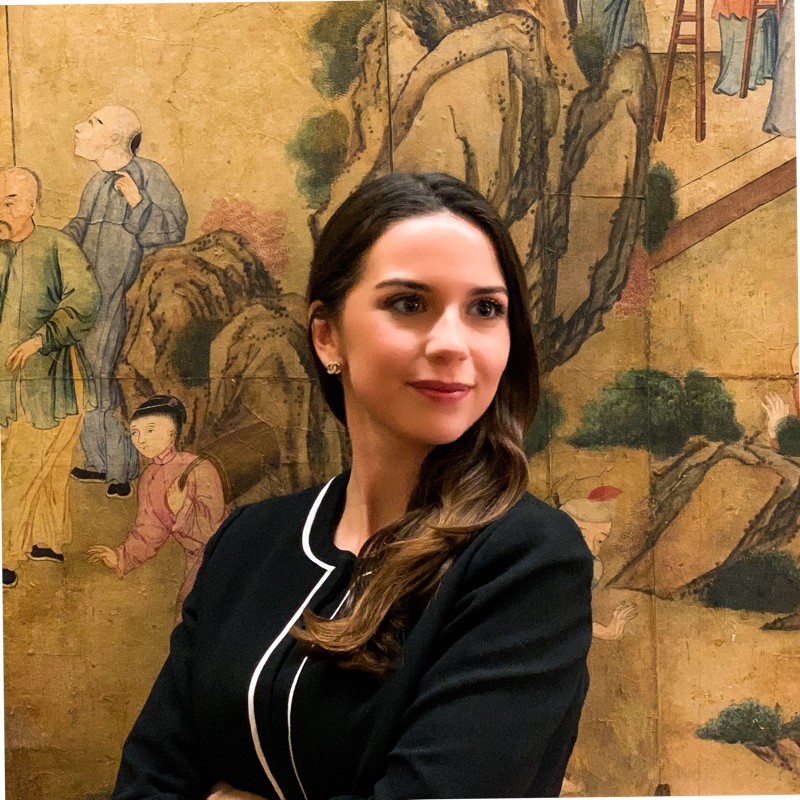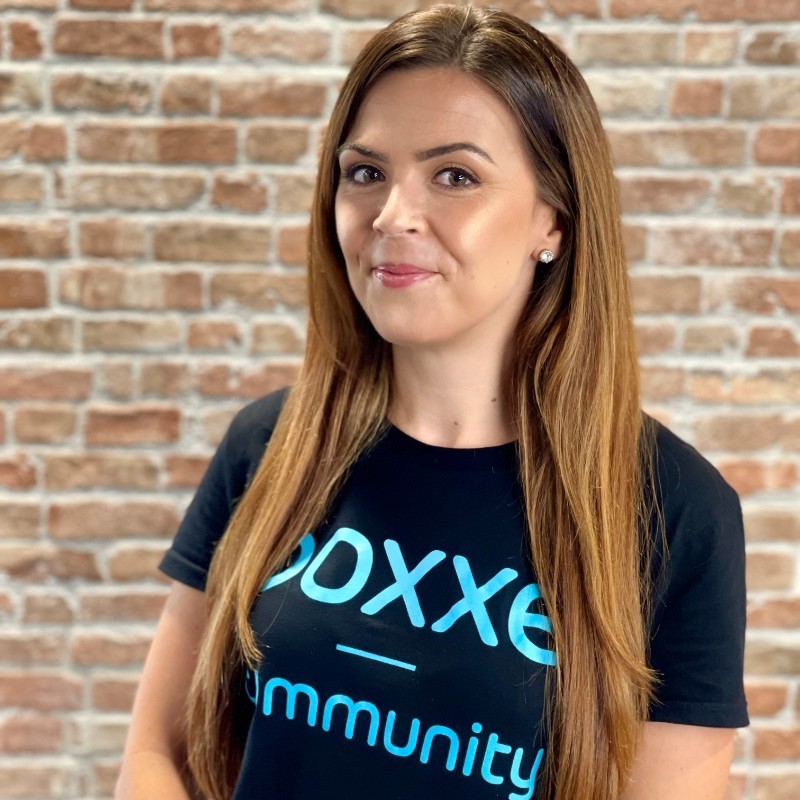
Monica Wolff
Director, Lenovo Corporate ESG Communications and Global Philanthropy
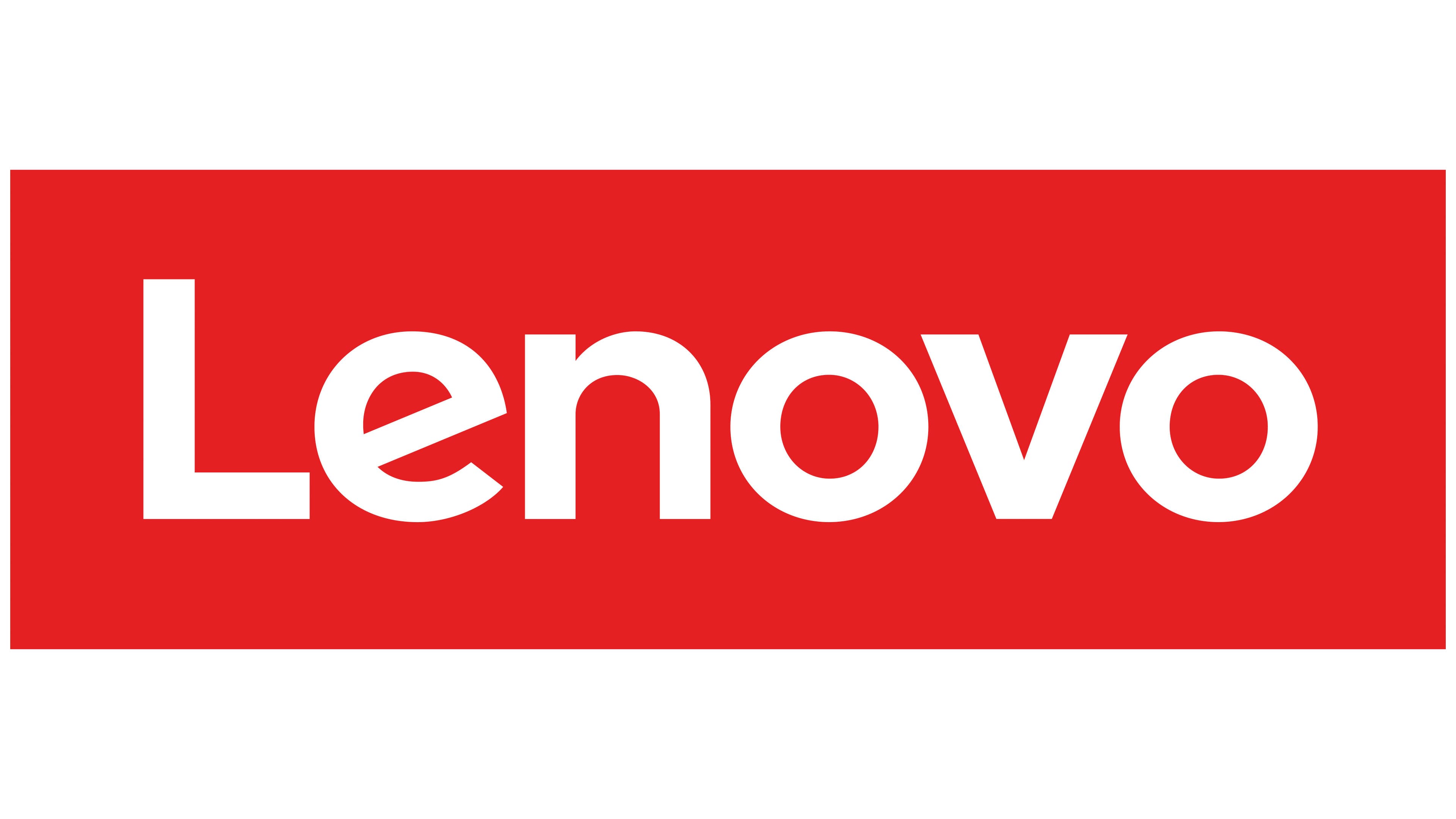
Lenovo
United States
- global CSR programme
- employee engagement
- community investment
Monica Wolff is the Director of the Lenovo Foundation, the leading tech multinational’s Corporate ESG Communications and Global Philanthropy programme. She joined the company when Motorola Mobility was acquired by Lenovo in 2016, and since then she’s been tirelessly working to spread the Foundation’s mission across the globe, designing Lenovo’s corporate giving strategy and overseeing its execution.
Hear her full story here.
Purpose mission
Lenovo’s global philanthropy mission is to empower underrepresented populations with access to technology and STEM education. Everything they do is oriented towards the Foundation’s vision of providing smarter technology for all. Their operations are divided into three main channels, using a centralised model which aims to bring all 75,000 employees operating in more than 60 countries together.
These channels are:
- Strategic Giving - The grants which go towards major projects that align with the programme mission.
- Employee Engagement - Empowering Lenovo’s diverse employee communities to support personal causes, achieved by providing employee volunteer benefits and other matching gifts.
- Disaster Response - Reacting to urgent situations by modifying how the foundation gives.For example substituting a PC for essential supplies, which can bring immediate relief to communities in need.
With the idea that ‘STEM is for everyone’ underpinning all their work, Monica is keenly aware of the significant global talent gap in tech. She’s been supporting organisations which help adults upskill and enter the STEM workforce through nontraditional education paths, with the firm belief that a more diverse talent pipeline leads to bigger and better ideas.
“Investing in adult STEM education benefits both tech recruiters who are struggling to find the right talent, and those adults who are ready to learn but need access to these skills.”
Monica Wolff - Director of Lenovo’s Corporate ESG Communications and Global Philanthropy
The Foundation started out with the goal of positively impacting 15 million people by 2025, but the programme is already seeing such high levels of success that this initial target may be raised in the coming year.
In our discussion with Monica, she explains the strategies behind this success, from donation matching to the role of employee resource groups to disaster response - all of which contribute towards the Foundation’s vision.
A global-local approach to employee governance
The Lenovo Foundation has a global team to ensure that none of the decisions made are disproportionately centred on one geographical area. The centralised model keeps Lenovo employees around the world in lockstep with their mission, programmes and resource allocation, and the different operation channels make sure the Foundation is reaching its goals using a holistic strategy which achieves their KPIs.
Any multinational company operating on a scale like Lenovo will likely encounter challenges when it comes to uniting and aligning employees in their joint mission. As Monica explains, it’s possible to build a consistent employee experience using strong communication between a centralised global board and local leaders.
“We take a global local approach with everything we do. We hire people locally to lead our markets, and that's something we're really proud of. That's the same approach that we've taken with philanthropy. It's about empowering the locals, trusting the locals, but then having that centralised governance to make sure you're setting them up for success.”
Monica Wolff - Director of Lenovo’s Corporate ESG Communications and Global Philanthropy
With Lenovo’s Global Month of Service, which originated in 2017, Monica and her team connect with employees around the world who are passionate about going beyond their call of duty to give back to their local communities. 80-90% of resources are allocated to projects supporting the company mission, with the remaining percentage going to employees with their own passion projects. The core Lenovo mission comes first, but empowering employees to act for causes that are important to them is just as much a priority.
Each year, every Lenovo employee is entitled to up to $10,000 in matching funds. Their centralised governance model enables their team to provide the same amount of funds to all employees so that everyone has an equal opportunity to do good at work. Most employees give around $1,000 a year through the Benevity platform.
Benevity also streamlines the volunteer match initiative, where employees can log volunteering hours, which will then be pulled from their $10,000 annual cap. This giving platform allows Monica and her team to manage and communicate their budget effectively.
The efficient management produced by this partnership pays off: last year Lenovo reported an impressive $21 million in product and cash donations around the world. However, the Foundation ensures that there’s an option suited to each employee by promoting different ways for employees to get involved. One of those ways is through employee resource groups (ERGs), which play a crucial role in fulfilling Lenovo’s corporate purpose.
Making impact more personal with employee resource groups
Today, employee purpose goes beyond sending out checks to organisations picked by their company. How their employer impacts society or reflects their personal values plays a much larger role in employee engagement, retention and belonging. For this reason, Monica and her team involve Lenovo’s ERGs in their philanthropic efforts through a project that enables them to apply for grants on behalf of worthy causes.
The Foundation treats their mission as a ‘north star’ meaning that each organisation they support should broadly work towards providing STEM education to underrepresented minorities. From there, ERGs are given the power to decide where the money goes.
These voluntary, employee-led groups support causes connected to the shared mission at their core. For example, a female-led ERG might support a charity which creates hackathon events for girls. This scope allows ERGs to pick causes they feel connected to, while working towards the company’s wider social impact vision.
As ERGs scale their impact and help the Lenovo Foundation reach its KPIs, they receive incremental funding. Decisions about grants are made collectively, together with the Diversity and Inclusion team, to ensure that all the necessary requirements are in place for a group to successfully apply for funding.
“When you belong to an employee resource group and you receive the resources from the global team, then you feel really supported, like what you’re doing is really valued by the company. And it's a win-win for both of us, because most of the projects are also aligned to the mission of the foundation.”
Monica Wolff - Director of Lenovo’s Corporate ESG Communications and Global Philanthropy
Monica and her team take great pride in investing in their employee volunteers, with thorough training programmes for ERG leaders and Global Month of Service leaders. This governance model aims to instil a sense of accountability which empowers employees to know that the Foundation isn’t simply allocating funds without following up on them. The Foundation has expectations for impact and expectations for engagement, and they’re looking for results from every partnership.
From long-term projects to providing immediate aid in times of crisis
While fund-matching and ERGs support long-term projects, another core element of Lenovo’s corporate giving programme is responding to global emergencies. Situations demanding immediate action often make people want to step up, and here Lenovo uses their employees’ desire to do something in order to act fast and provide relief to those who need it.
Recently it’s been all-hands-on-deck following the devastating Turkey-Syria earthquake. The response strategy follows a matrix model which helps create an objective starting point and accelerates the aid process.
The first step is to look inwards and check every employee is safe. Once this is confirmed, the team looks to the wider community and develops an aid strategy. In situations such as these, communication is key. Benevity enables the Foundation to respond quickly and effectively using the employee engagement tool which operates on a global, regional and local scale. As Monica says, the Foundation was able to reach out to its ‘social champions’ in EMEA, from where it carried out on-the-ground assessments to determine the specific needs of those affected by the earthquake.
For the wider Lenovo community, spreading this information encouraged other employees around the world to donate to the cause. Many hundreds donated to the fundraiser through the Benevity platform, while the Foundation developed their corporate response strategy to best allocate these resources.
“Having Benevity and being able to put [our response] together quickly really helps build confidence so that they know they can come to us for a quick response. Teams don't have to go rogue. We can do a global email, we can do a regional email, we can do a local email really quickly and communicate with our employees and let them know that we're responding.”
Monica Wolff - Director of Lenovo’s Corporate ESG Communications and Global Philanthropy
She added, “And then to build off of that and construct our corporate response, it kind of helps to buy us time so that we can be on the matching mechanism when it comes to our larger corporate response of tens or hundreds of thousands of dollars. We can have a little bit of breathing room, satisfy our internal stakeholders, and then have a little bit of breathing room to make decisions about where those resources go.”
Tips and advice for other companies
- Relevance is key. No matter what kind of platform you’re using, today people are overwhelmed with communications. It’s difficult to get your employees’ attention. How do we increase relevance? We communicate locally.
- Take advantage of available resources. For example the Association for Corporate Contributions Professionals (ACCP), which is based in the US. Having global partnerships helps inform on the changing landscapes, while building meaningful connections with others in the ESG space.
- Reward employees for their volunteering work. Appreciation is essential to building a successful corporate giving culture. For example, fund allocation may be based on scale of engagement and scale of impact. Recognition is a key part of following through to ensure accountability.
“Being connected to other givers is really important, particularly in learning not to look at corporate giving as competitive, but collaborative. At the end of the day, we’re all trying to improve our own communities.”
Monica Wolff - Director of Lenovo’s Corporate ESG Communications and Global Philanthropy
Or check out
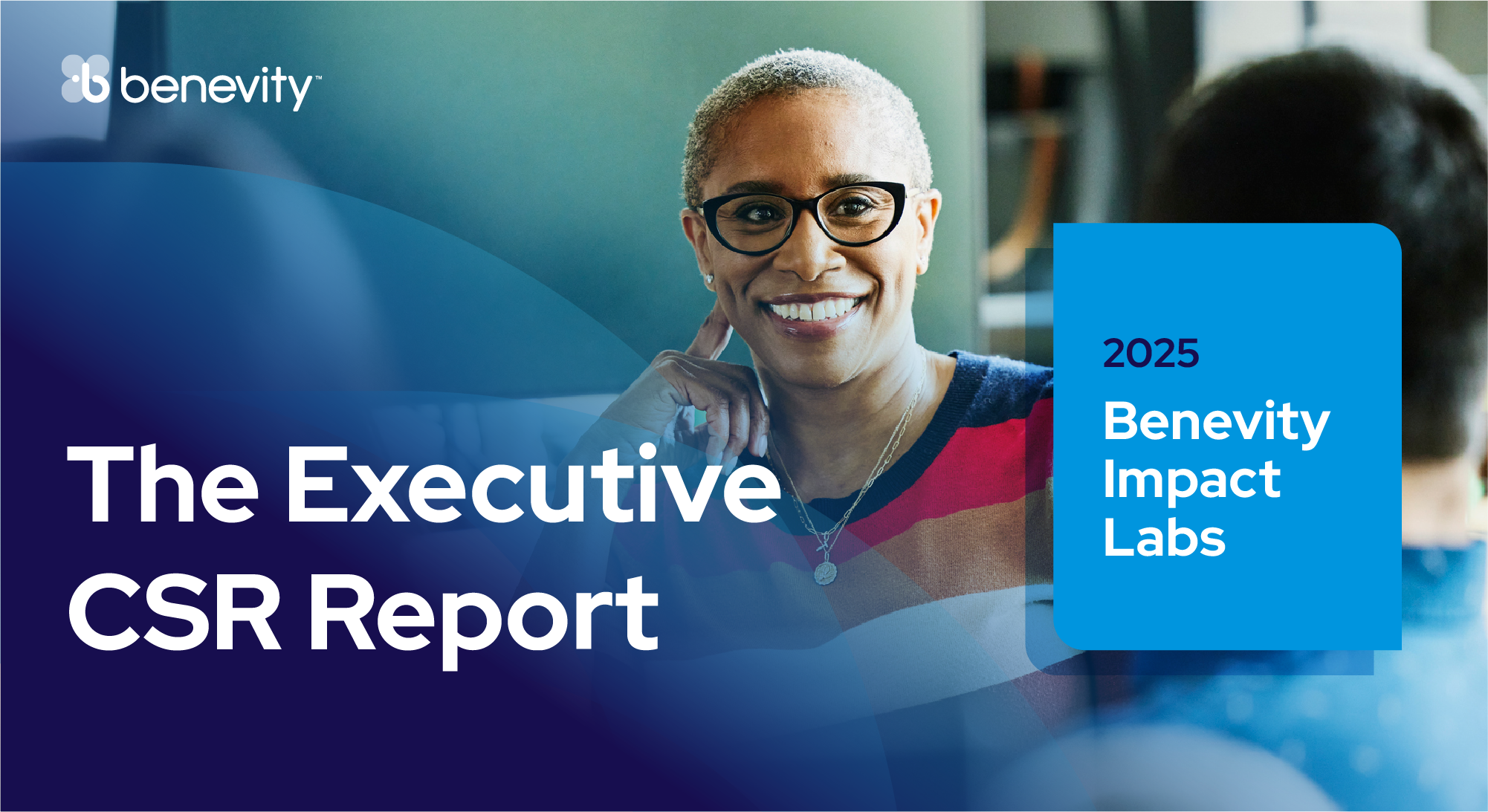
Benevity report predicts surge in CSR investment amid heightened public scrutiny
New survey of 500 executives reveals 76% are committed to increasing CSR budgets, viewing it as key to driving business ROI.

Volunteering as a resilience strategy
For impact leaders and their teams being asked to prove the measurable value of their work, investing in volunteering is a powerful lever.
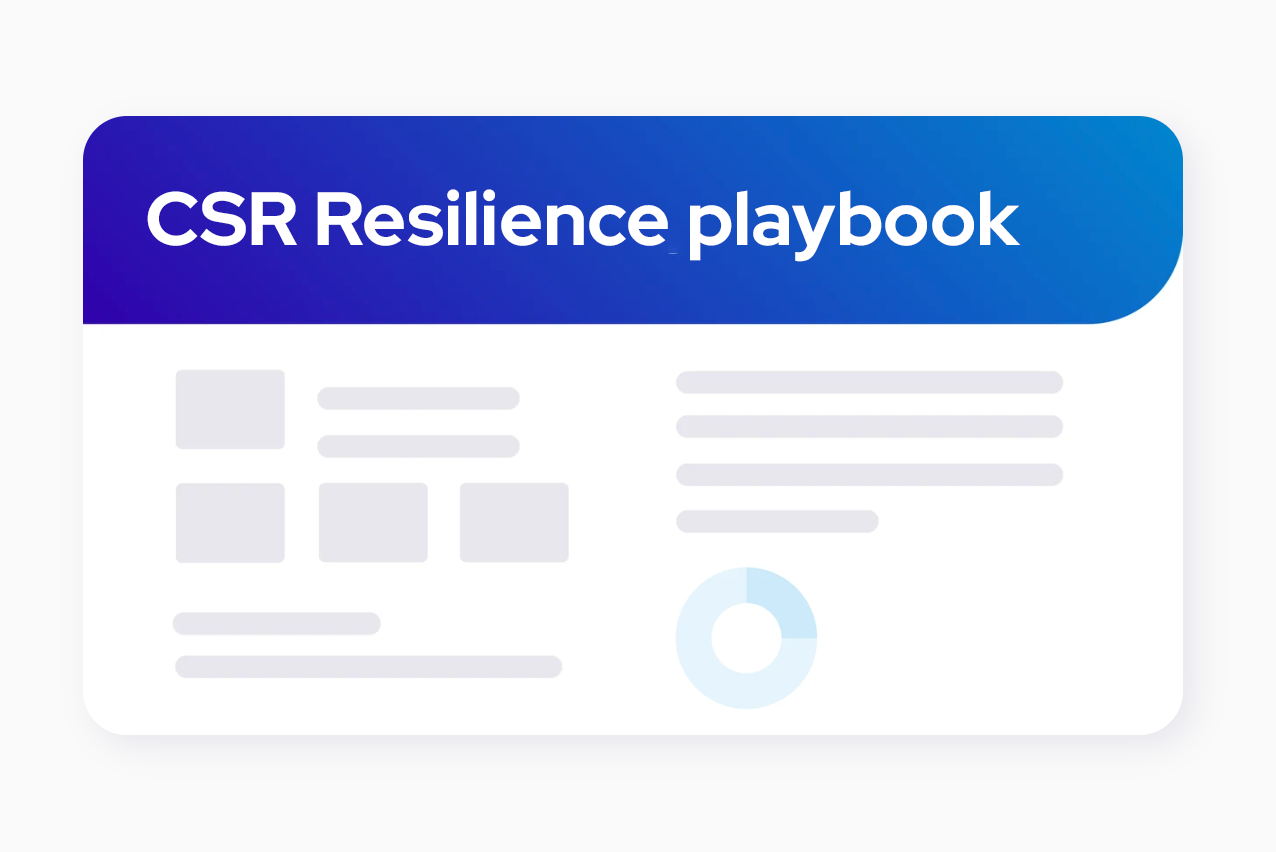
CSR Resilience Playbook
Strengthen your CSR strategy with our Resilience Playbook. Get actionable steps to help you lead with purpose through change and drive lasting impact.









